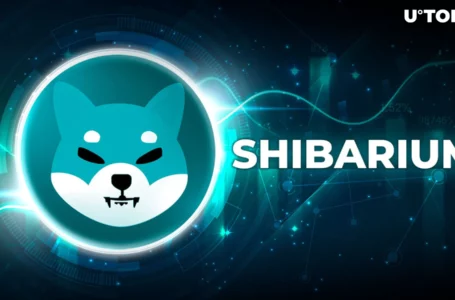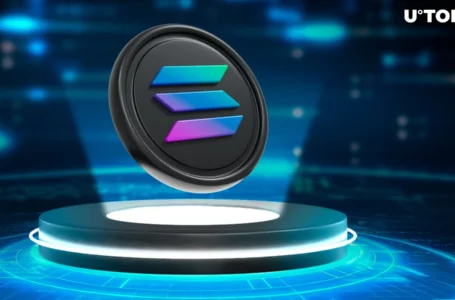
Decentralized exchanges keep popping up, but so far none have been able to overtake Uniswap as the top decentralized exchange. Which is a shame, because Uniswap is certainly not perfect. If there were an exchange that could rectify the problems that Uniswap has rather than copying them, maybe we would see some evolution in the space. Well now that’s a distinct possibility as the DODO Exchange is looking to take market share from Uniswap by actually improving on its problems. It’s doing that be attempting to eradicate impermanent loss, and improve liquidity by using a unique market making algorithm.
DODO Exchange Overview
DODO Exchange is created on the Ethereum network and it appears to be the next generation exchange when it comes to on-chain liquidity providing (LP). When you compare PMM side-by-side with AMM it is clear that an improvement has been made to a first generation attempt at creating a decentralized exchange.
The second generation’s LP tech is here, creating on-chain, contract-fillable liquidity for all users. With DODO Exchange there is always sufficient liquidity for every trade, just like you’d traditionally find in centralized exchanges. This benefits users by creating an exchange with very little slippage, as well as mechanisms that reduce impermanent loss to the minimum possible.
AMM-Based Decentralized Exchanges
We will use Uniswap as the model for AMM-based decentralized exchanges throughout this review, although we do understand that many others exist. For example, Kyber, Curve, and Bancor all use the same AMM model in creating an exchange.
An examination of Uniswap will give us a basic understanding of how automated market making works, but more importantly we will see the shortfalls inherent in the design of AMMs. All include impermanent loss risks, slippage, and the use of arbitrageurs to create a functioning decentralized exchange. DODO Exchange is looking to improve on this by minimizing both impermanent loss and slippage, while doing away with the need for arbitrageurs to make their PMM model work.
How DODO Exchange Works
Now that we’ve gotten all the background information out of the way it’s time to take a deep dive into DODO itself and see what’s under the hood.
What sets DODO Exchange apart from other DEXs is that it offers decentralized on-chain asset trading, but provides its users with order execution that’s comparable with the centralized exchanges and trading platforms. As is the case with other DEXs arbitrageurs and liquidity providers continue to play a significant and crucial role in the DODO ecosystem, but the team claims to have eliminated impermanent loss risk for all intents and purposes.
And in a welcome upgrade from the AMM model, with DODO’s PMM model liquidity providers are not required to provide both sides of the trading pair when adding liquidity. With DODO it is completely fine for the LPs to add just a single asset to any of the liquidity pools and begin earning fees.
The DODO Vending Machine
The DODO Vending Machine allows anyone with a wallet to create a liquidity market using DODO’s PMM technology to create a bonding curve for the provisioned tokens Just provide tokens, define the pricing curve desired, and the DODO Vending Machine will create a liquidity market for the asset, decentralized and non-custodial, but accessible to everyone. What’s even better is that this is a fully permissionless process, meaning anyone with a wallet can build trading venues on DODO without having to worry about censorship and interference from the platform itself (unlike Robinhood).
DODO Private Pool
This is similar to the DODO Vending Machine, but with more options for professional market makers who have special requirements that can’t be satisfied by the DODO Vending Machine. The DODO Private Pool gives market makers the ability to do the following:
- Make one-sided deposits/withdrawals (DVM requires two-sided liquidity provision/removal).
- Change the pricing curve at any time (DVM’s pricing curve cannot be modified after creation).
- Have liquidity everywhere in the price range from zero to infinity.
DODO NFT Vault
The DODO NFT Vault is a price discovery and liquidity protocol for non-standard assets. It allows users to create new NFTs or use existing NFTs and pledge them into the DODO NFT Vault. The NFTs can be kept unique or they can be fractionalized which divides the NFTs in the Vault into many pieces with fungible tokens issued to represent them.
Once the Vault is established a liquidity pool for the NFT can be created to establish a flexible and efficient market to trade these pieces. This is powered by DODO’s Proactive Market Maker algorithm. Through DODO’s SmartTrade and liquidity aggregation service, the pieces can be traded with any tokens at the best price. Learn more about the DODO NFT Vault here.
The DODO Token
The DODO token is an ERC-20 token and is the native governance token for the platform and is also used for incentivizing liquidity provisioning on the platform. There is a total supply of 1 billion tokens, with just over 100 million DODO tokens in the circulating supply. There were 40 million tokens sold in a seed round at $0.01 each, and later there was a private sale with 100 million tokens offered at $0.05 each.
Seed investor tokens will be locked 1 year after token issuance, and then linearly vested over nest 2 years and private investor tokens will be locked 6 months after token issuance, and then linearly vested over next 1 year per Ethereum Block.
DODO v2
The impermanent loss suffered in Uniswap liquidity pools ends up as a permanent loss all too often. Other AMMs are a turnoff for traders due to the massive slippage that can occur with larger orders. These two factors are what make DODO such an innovation in the decentralized exchange space. With the advent of
Conclusion
There’s no question that the DODO exchange has improved the trading experience on decentralized exchanges. It has also decreased the risks faced by liquidity providers. The use of Proactive Market Maker technology has guaranteed more stable asset pricing, and more efficient liquidity, even for lightly traded tokens.
The offered services are unique and growing. The addition of crowdpooling, IDO allocations, trader mining, NFT vaults, the DODO Vending Machine, and private liquidity pools have all contributed to a stronger platform with increased trading volumes. This in turn maintains stability for the platform and makes it even more attractive to traders and liquidity providers.



















